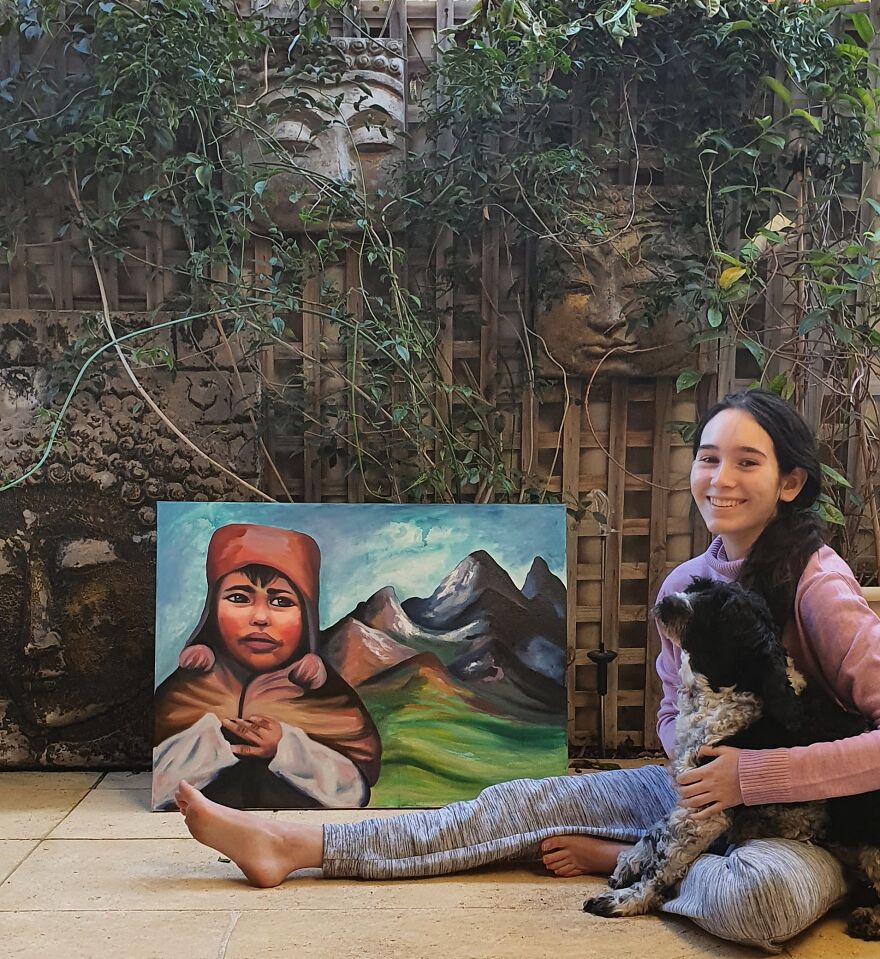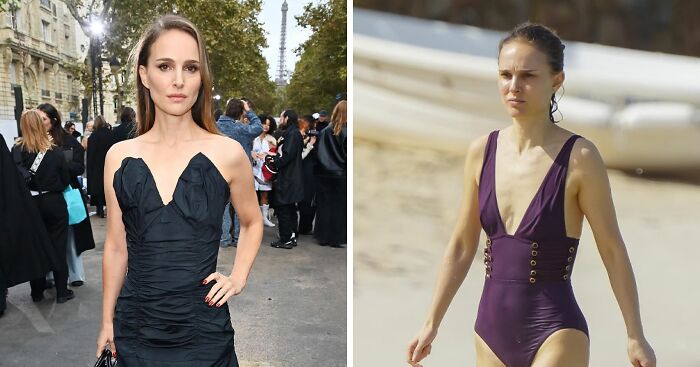
A 16-Year-Old Artist Jordana Moon Wants Us To Question Our Relationship With Nature, Culture, And History
Sixteen-year-old Jordana Moon is a young upcoming artist from Perth, Western Australia. She paints beautiful insightful pictures of ethnic people with aspects of nature, culture, and history. She has graduated from the Milan Art Institute in Georgia America, in hopes of pursuing her dream as an artist. Besides traversing the wilderness of South West Australia, she traverses new terrains and challenges of the art world.
To learn about her background, inspiration, and her style, she has agreed to answer a few exclusive questions.
More info: Instagram
Can you tell us a bit about yourself and how you got started as an artist?
I am a 16-year-old from Perth, Western Australia. As a child I was diagnosed with Dyspraxia which is a condition that affects my speech and motor ability, therefore I found it very difficult to communicate my needs and wants so I used drawing to express myself. As a teenager I was further diagnosed with Asperger’s, a type of autism that affects my speech and behavior therefore painting became the voice for my thoughts, beliefs, and feelings when I couldn’t articulate them.
I have been a huge advocate for environmentalism, sustainable tourism, and veganism therefore I was bound to discover that environmental problems extended to Indigenous communities. I then went on a journey of learning about Indigenous peoples around the world and their sacred connection to nature, the spirits, and ultimately our history as humans.
Are there any specific themes or issues you wish to portray in your paintings?
I believe that you can lose the sense of who you are as a person while painting when you are trying to convey a theme too specifically. Whilst my themes are specific, they are quite open-ended and can be experienced in different ways.
When I am in my creative process, my soul flows out of me onto the canvas. My beliefs, my passion, and my hope is imprinted onto the canvas as it is imprinted onto my soul. From the choice of my colors to how I lay down a brush stroke, it’s a manifestation of what is deep inside of me.
Issues that might be present in my work include colonialism, eviction, and the destruction of culture and heritage. Etc.
Art Studio
Can you describe your creative process?
I begin my creative process by choosing images of people from old- sometimes black and white- photographs. I will have a specific idea in mind when I see the photograph and I will try to capture what I felt through drawing before applying it to canvas.
I will use layers of splashing transparent inks before applying a rich vibrant coat of oil paint. I feel that oil paint best suits my temperament as it allows me to really take my time on the canvas and to think about the picture. I see a lot in common between oil paints and myself as we’re both slow, gentle, and quiet, so I think we suit each other. Sometimes I will incorporate other mediums such as charcoal, pastels, collage, coffee/tea, or whatever brings out the vision in my paintings.
I describe my process as abstract realism combining realistic portraiture and objects but with abstract expressions.
You said in a social media post that you have autism; how does that inspire or challenge you in the art industry?
Autism can be very difficult as one experiences the world very differently from the neuro- typical person and it can be challenging to communicate it. I find art as the most expressive form where I can tell the audience who I am and how I see the world which I otherwise find hard to express.
Us artists are a unique population that can be very unconventional at times therefore I don’t see my autism as a challenge in the industry. However, I don’t see autism as a defining feature or a categorization of my art, I see it as the expression of my personality and beliefs as a whole. Sometimes when people with autism create art, there is a risk of the art being categorized as ‘autistic art’.
Forest Colours
Who are your biggest influences from contemporary artists to traditional masters?
I tend to gravitate towards 19th-century art movements such as romanticism, orientalism, and primitivism where artists like Paul Gauguin, John Frederick Lewis, and Jean-Léon Gérôme dominate the scene. The 1800s was the Golden Age of orientalism where tourism and globalization were established and there was a spiritual revival resulting in the naturalist, neo-paganism, and primitivism concepts. I find a lot of inspiration from artists and poetry in this period.
Whilst contemporary artists such as Dimitra Milan and Stephanie Ledoux have greatly influenced and empowered my style and voice, I seek influence from people in other creative industries such as poets, photographers, and travel bloggers like Jimmy Nelson, Steve McCurry, and Eva Zu Beck.
I see nature is a constant theme in your artwork, can you tell us more about that?
I have a sacred relationship with nature and I see it as a part of humanity, not something separate. When we think of nature, we think of mountains in Patagonia or the savannahs of Kenya, however, nature is everywhere and it’s who we are. I see indigenous peoples as the world’s truest and first environmentalists and their spiritual relationship with the Earth has inspired me greatly and I seek to portray that relationship in my paintings and stories.
I will frequently take walks just to be with nature, with no goal in mind, only to hear the birds, smell the grass and gaze at the trees. Whilst I like to paint grand natural features such as volcanoes and mountains, I also paint nature that isn’t so majestic but is equally significant such as the rings of a tree, leaves, or a body of water. Nature is so varied, and I wish for that diversity to be reflected in my paintings.
When I’m hiking, I am transported to a different reality from urban living. It’s a way for me to connect to the spirit of the ancient nomad, the hunter-gatherer that lives in all of us. Hiking clears my mind and it’s where I feel the most spirituality therefore it makes sense that I find all my ideas and creativity in nature.
Mountain Boy
How is traveling important to you?
If I wasn’t an artist, I would be a tour guide. Traveling is a great passion of mine because you witness the beauty and diversity of the world. As a traveler, you develop empathy and understanding of all creatures on the planet. Travel is rebellion in its purest form, a way to set you free from the boundaries of the everyday mediocre life. We all have that primal craving for adventure and to journey to the far corners of the globe. It’s what defines us as humans.
If you see my artwork, you can imagine that traveling would be very important to me as I paint people of different ethnicities and a variety of natural scenes. When you travel, you feel the energy of a specific place and I try to capture it in my paintings. Whether it’s morning prayer in Kabul, the ancient red rock caves dotted with paintings in Western Australia, or trekking in the afternoon glow of a desert in Rajasthan- I hope to connect you to that place and capture the essence of the experience.
What do you hope viewers take away from your paintings?
I hope that viewers deeply question themselves, society, and the world we live in. I hope they ask themselves questions relating to how we treat other humans and the environment.
Our bond to nature has been severed through modernity yet there are fragments of that bond still left in the world and through my art, I hope to connect you to that bond.
In my art, I explore important concepts that each of us needs to question so we can have a brighter future for all of the Earth including humanity.
Our Ancestor’s Handprints
Lost Lands
829views
Share on Facebook
 Dark Mode
Dark Mode 

 No fees, cancel anytime
No fees, cancel anytime 


































15
0